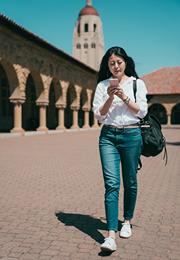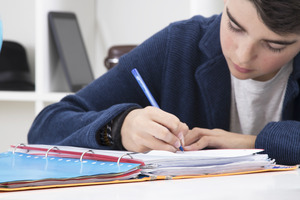Escape the Routine: Why Every Family Needs a Vacation Break
In the hustle and bustle of daily life, it’s easy for families, especially those with kids and teens, to fall into predictable routines. School, work, extracurricular activities, and household responsibilities can dominate your schedule, leaving little room for meaningful interactions or special experiences.
This is where the power of family vacations comes into play. Taking a break to enjoy affordable, memorable getaways allows you to recharge, reconnect, and create lasting memories together.
Recharging as a Family
Family vacations provide a refreshing escape from the monotony of everyday life. Getting away, whether it’s a weekend camping trip, a road trip to a nearby city, or a staycation exploring local attractions, allows you to recharge both physically and emotionally recharge both physically and emotionally. In this relaxed environment, you can shift your focus from daily stressors to what truly matters: your family. This time together lets you talk, share laughs, and create inside jokes that become cherished memories.
Moreover, vacations create opportunities for you to bond with your children and teens without the distractions of everyday life. Whether you’re embarking on an outdoor adventure or setting sail with children on board a luxury yacht, these shared experiences create lasting memories. These special moments strengthen family connections and provide a sense of togetherness that carries over long after the trip ends.
Reconnecting as Parents
Of course, there are times when you and you partner simply need to get away together explore exotic locations. Destinations such as Aquila resorts for couples in Crete provide options for a kids only experience as well. By stepping outside of your routine, you can appreciate each other’s company in a new setting. This could be as simple as playing games at a campsite, hiking a scenic trail, or enjoying a picnic in a local park. Doing fun activities together not only strengthens your family unit but also helps your teens escape the pressures they face in their daily lives.
Educational Benefits of Travel
Vacations are not just about relaxation; they also offer rich educational experiences for your children. Traveling opens their eyes to new cultures, ideas, and ways of living. Whether you’re exploring a historical site or visiting a national park, each experience provides a chance for growth and learning.
Encourage your kids to research the places you’ll visit, creating excitement and curiosity about the destination. Engaging them in discussions about what they learn can deepen their understanding and appreciation of the world around them.
Keeping Up with Schoolwork
If you’re concerned about your kids falling behind in schoolwork while traveling, there are ways to address this. Planning a longer getaway doesn’t have to mean sacrificing academics.
To help your kids keep up with schoolwork during a long vacation, start by scheduling a meeting with their teachers before you leave to gather assignments and clarify any questions you may have. Maintain open communication with the teachers by emailing them or joining online classes whenever possible, ensuring you stay updated on your child’s progress. Don’t forget to pack essential school supplies, such as textbooks and notebooks, to facilitate learning on the go.
Establish a daily homework schedule to provide structure, allowing your child to dedicate specific times to their schoolwork amidst vacation activities. Finally, encourage your child to stay motivated and focused, as consistent short study sessions are far more manageable than dealing with a backlog of assignments upon returning home.

Planning Affordable Family Vacations
While the idea of a family vacation may seem daunting due to costs, you can plan an enjoyable getaway without breaking the bank. The key is in the planning. Start by setting a realistic budget that considers transportation, accommodations, food, and activities. Look for deals and discounts well in advance and explore options like camping, staying at budget-friendly hotels, or even vacation rentals. Consider visiting national parks, enjoying local festivals, or simply exploring nearby destinations that offer adventure without extravagant costs.
Prioritizing Experiences Over Expenses
Families often feel pressured to spend excessively to create memorable vacations, but the most meaningful experiences don’t have to come with a high price tag. Focus on activities that allow you to connect with each other and the environment. Go hiking, have a family game night, or plan a scavenger hunt during your stay.
Consider packing meals or snacks for your trips to save on food costs, or try cooking together as a family while on vacation. Preparing meals can be a fun activity that fosters teamwork and togetherness. The memories created during these shared experiences often hold more value than any extravagant outing.
Practical Tips for Stress-Free Travel
As you prepare for your getaway, don’t overlook practical considerations that can prevent stress. For example, plumbing issues at home can ruin a trip or create unnecessary worries. Simple tasks like turning off the water supply, checking for leaks, and clearing drains can help avoid potential disasters like floods or plumbing malfunctions while you’re away. By taking these proactive steps, you’ll have peace of mind, allowing you to fully enjoy your vacation.
The Importance of Pacing Your Trip
Lastly, when traveling with kids and teens, pacing your trip is crucial to avoid burnout. Consider planning your days to include both activities and downtime. This balance will keep everyone engaged and prevent fatigue.
Conclusion
Breaking free from your daily routines through affordable family vacations is an enriching experience that creates lasting memories. By prioritizing connection over extravagance and planning thoughtfully, you can enjoy meaningful time together as a family. Whether exploring the great outdoors, visiting local attractions, or simply enjoying each other’s company, these experiences will leave a lasting impact. So, pack your bags and embark on your next adventure — your family deserves it!
About the Author
 Katie Brenneman is a passionate writer specializing in education, mental health, family lifestyle and online safety. When she isn’t writing, you can find her with her nose buried in a book or hiking with her dog, Charlie. You can follow her on Twitter.
Katie Brenneman is a passionate writer specializing in education, mental health, family lifestyle and online safety. When she isn’t writing, you can find her with her nose buried in a book or hiking with her dog, Charlie. You can follow her on Twitter.










